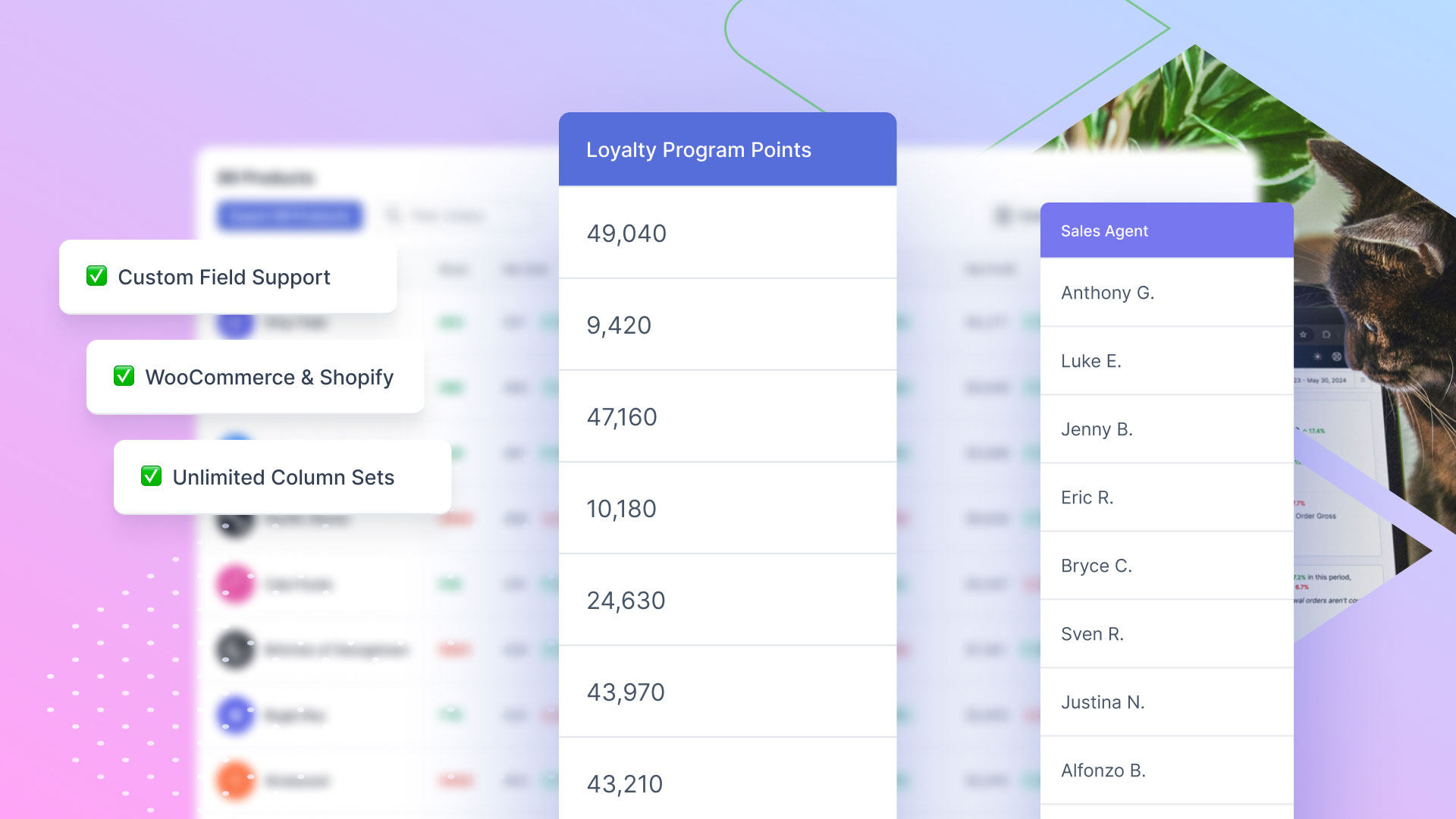If you're either starting a new subscription store or adding subscriptions to your existing WooCommerce store, you have come to the right place.
In this post, I'll show you how to get up and running with WooCommerce Subscriptions. This is a 'no fluff' guide where we get straight to the point of installing, configuring and managing your subscriptions.
And if you stick around to the end, I'll also show you how to:
See the most important subscription metrics like MRR, active subscriptions, churn and future renewal revenue.
Create beautiful automated emails for your subscriptions like upcoming payment reminder emails which will help reduce your churn.
For this guide, I'll be using the official WooCommerce Subscriptions extension.
I'll also assume that you already have WooCommerce installed and configured on your WordPress site.
Step 1 - Purchase the extension and install
First, you will need to purchase and download the WooCommerce Subscriptions Plugin.
At $199/year USD it is on the pricier side. It does however significantly extend the functionality of your store allowing you to create long-lasting recurring revenue streams.
You can also just pay the $199 as a once-off and use it forever (however you will only get updates and support for the first year). And when you factor in that WooCommerce itself is free and that you can get up and running very quickly (as you will see), the extension is worth it in our opinion.
Once you have completed the purchase, add it to your site like any other plugin.
From your sidebar click Plugins > Add New > Upload Plugin
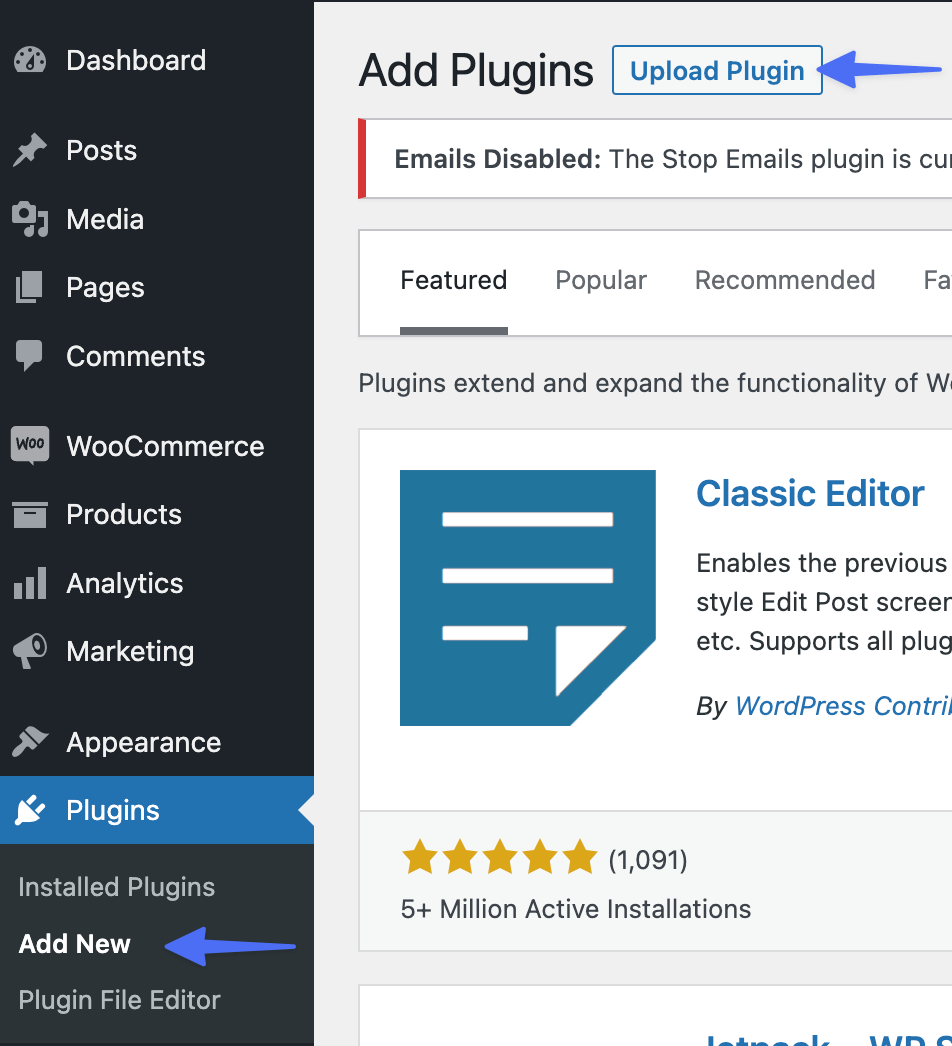
Then upload your ZIP file and click install now.
Once it's installed, make sure to active it:
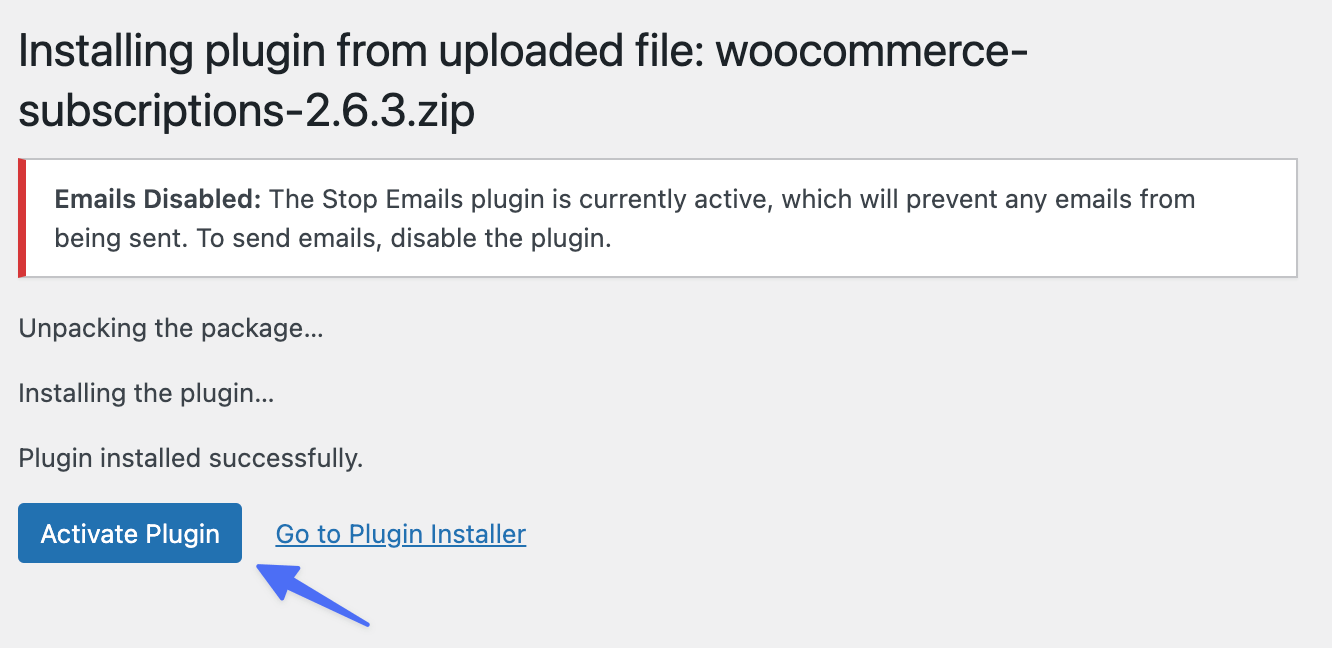
If it's installed and activated, you should now see it in your WooCommerce dropdown:
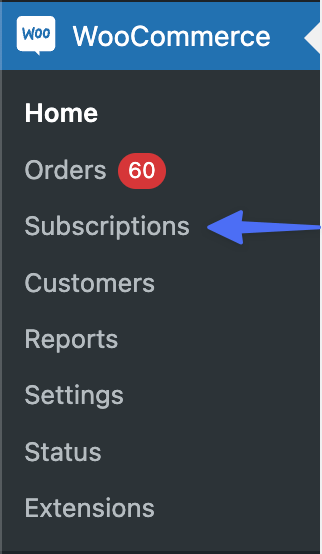
Step 2: Add your first subscription product
Now for the fun part — adding a subscription product.
Head to the add products page from your sidebar, Products > Add New:

Give it a name, description and image like with a normal WooCommerce product:
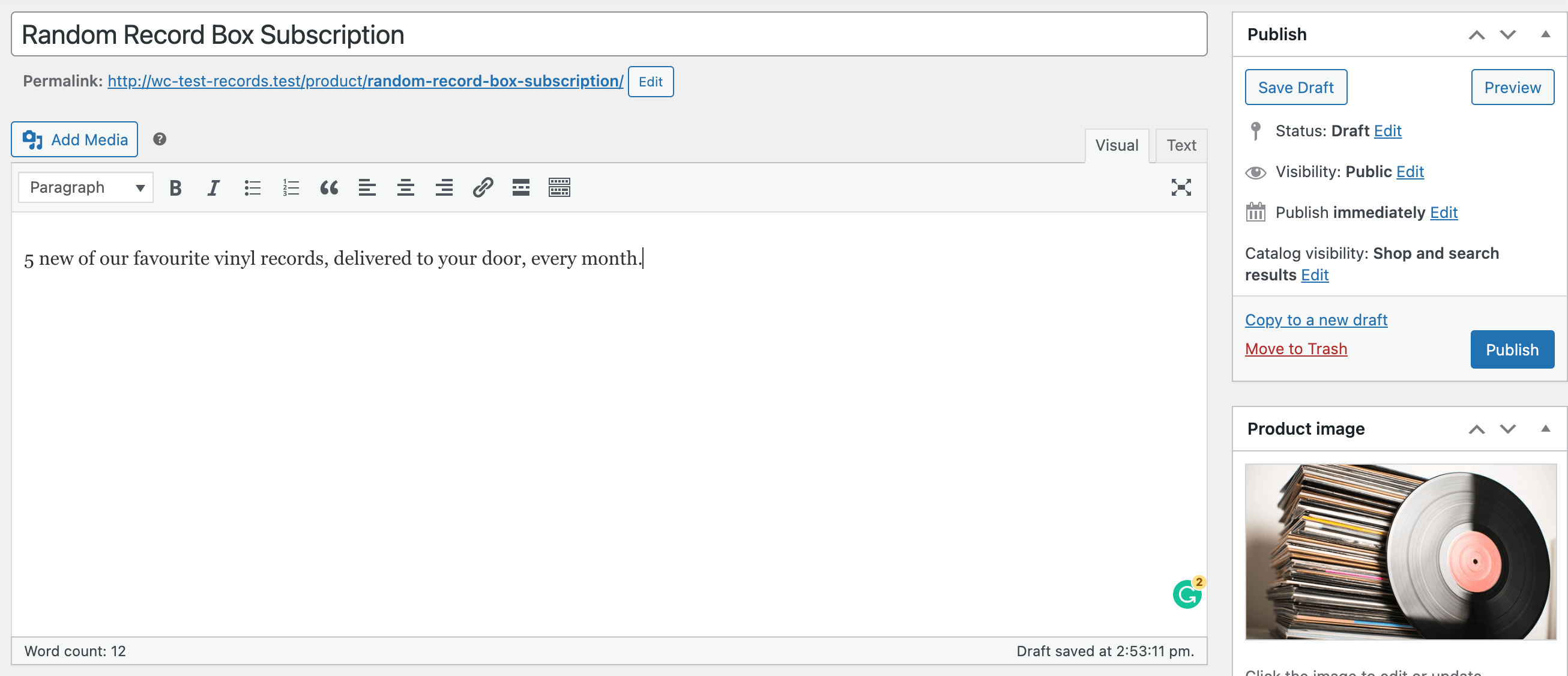
Next, instead of creating a simple product, select Simple Subscription:
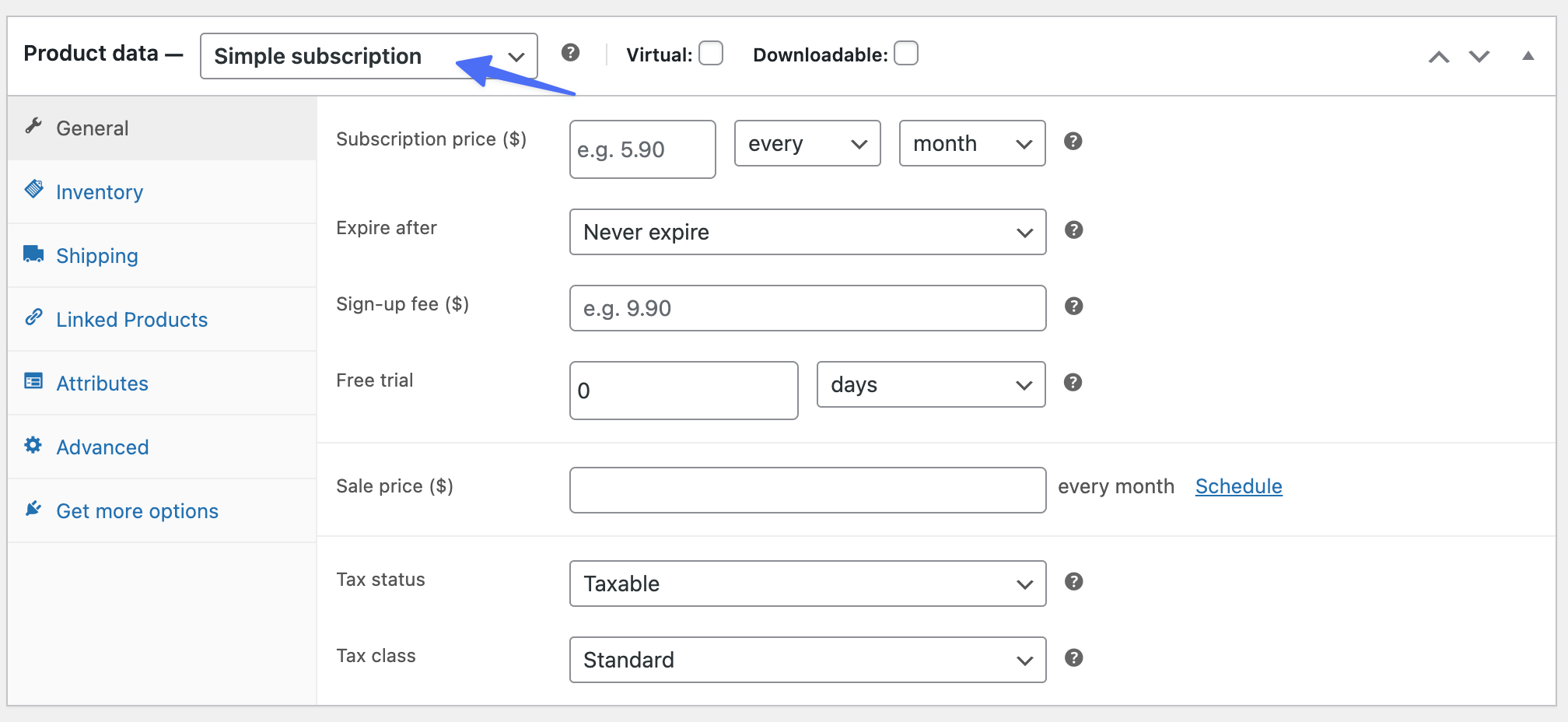
You should now see a number of fields for tailoring your new subscription product. The fields are:
Virtual or Downloadable: Check if either of these applies (only if you are selling a non-physical product).
Subscription price: The price the customer will pay every billing interval. So for example, $10 per month.
Expire after: Whether or not the subscription should expire after a certain period of time. In most cases, you don't want it to expire.
Sign-up fee: Whether the customer should pay a one-off extra fee at the beginning of the subscription.
Free trial: Whether the customer should have some time to trial the product before committing to purchase. If you're offering a digital/virtual product, I highly recommend offering a free trial.
Sale Price, Tax Status, Tax Class: All the same as if you were creating a regular simple or variable product.
In my case, this is what I've entered:
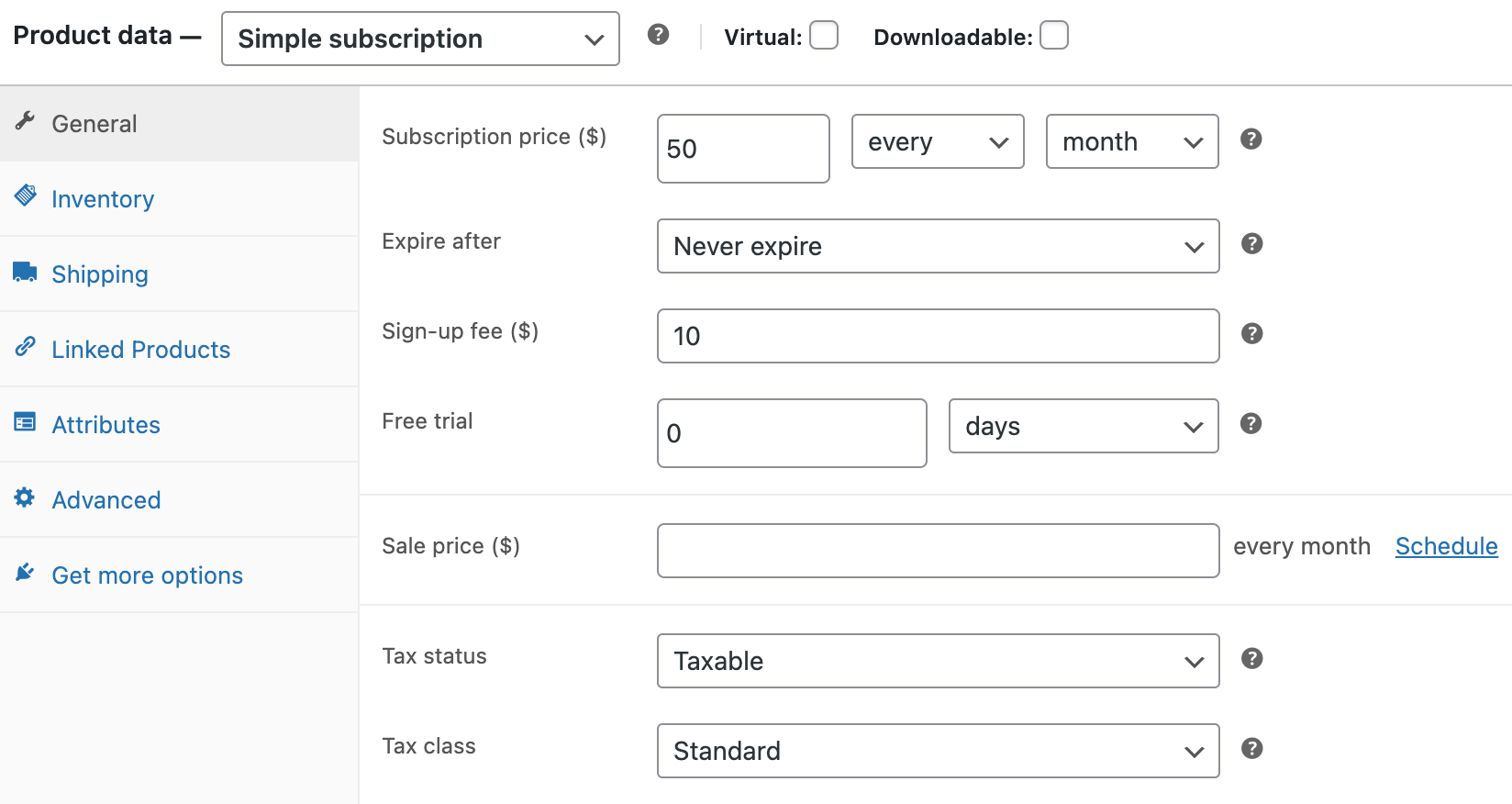
In terms of all the other options like inventory, shipping, attributes etc... these are all the same as when setting up a simple product. For more information on that, check out the WooCommerce docs.
Once you're done, click Publish. Keep in mind, once you click publish the product will be live on your store. So it's best to do this on a staging store first, and then push the changes to your live store.
Step 3: Review!
At this point, the product should be live on your store, so let's head to the shop page and see:

Perfect, it's showing as expected.
In terms of collecting automatic payments from your customers, you have a number of options, but the easiest is to use Stripe with their WooCommerce plugin.
Step 4: Manage your subscriptions
As your customers purchase new subscriptions from your store, they will show up in the subscriptions section of your store:

And the first 'parent' order for that subscription will show in your orders:

And while we are talking about managing your subscriptions, let's cover a few important concepts when talking about WooCommerce subscriptions.
As you have just seen in the screenshots above after the customer completes their purchase, two things are created in your store:
The Subscription
This contains all the data for the subscription like the price, billing period, next payment date, end date and other important data. If you click on the subscription in the screenshot above, we can see all these details:
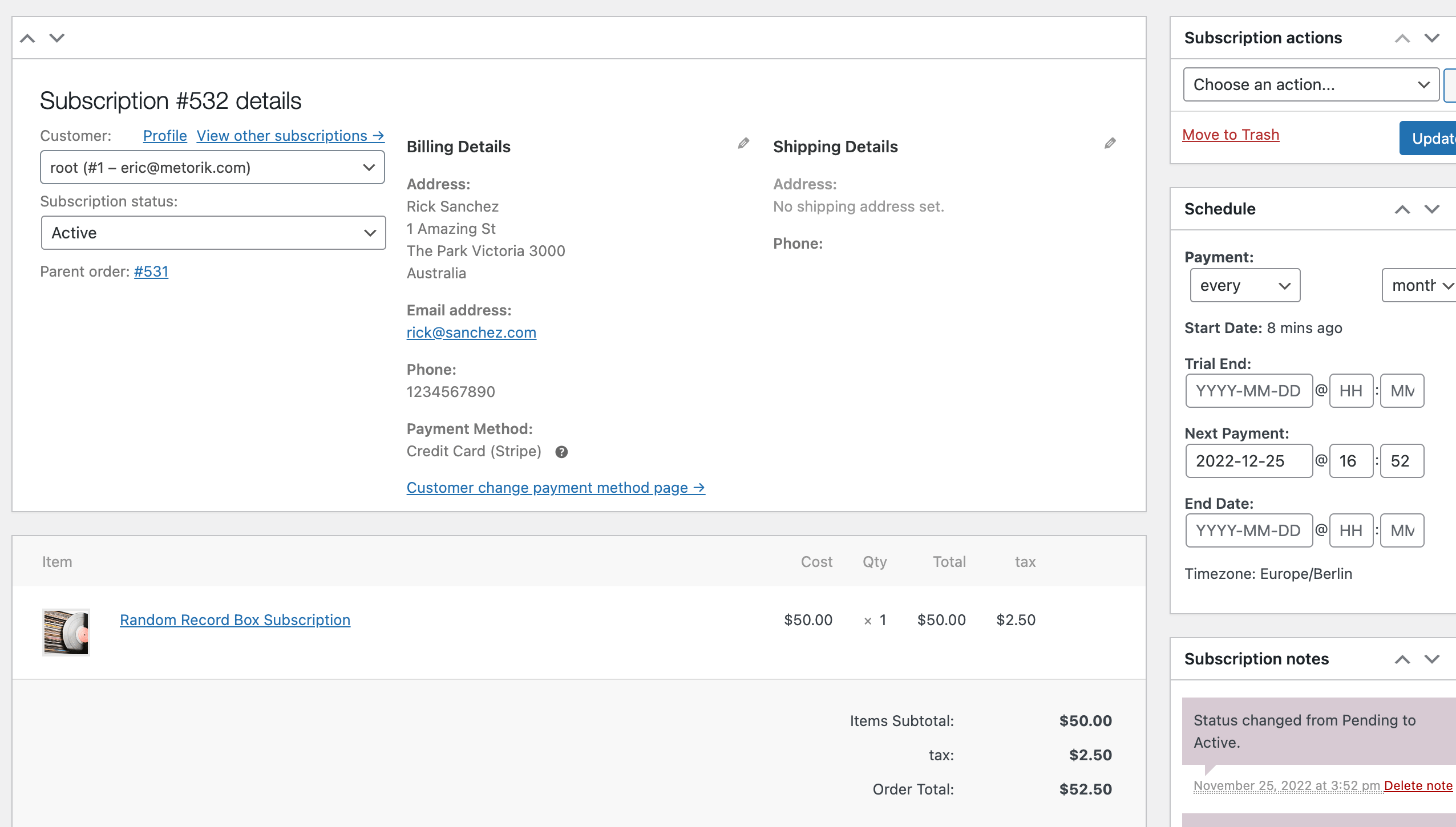
The Parent Order
This is the first order of every subscription. As such, every subscription can only have one parent order. The order after the parent order (2nd order), and every order that follows are called renewal orders. If we scroll down to the bottom of the subscription page, we can see our subscription referencing the parent order:

We currently don't have any renewal orders as the subscription was just created, but in a month from now, a renewal order will be automatically created and the customer will be automatically charged.
WooCommerce also has a few subscription reports which you can find in the reports section:
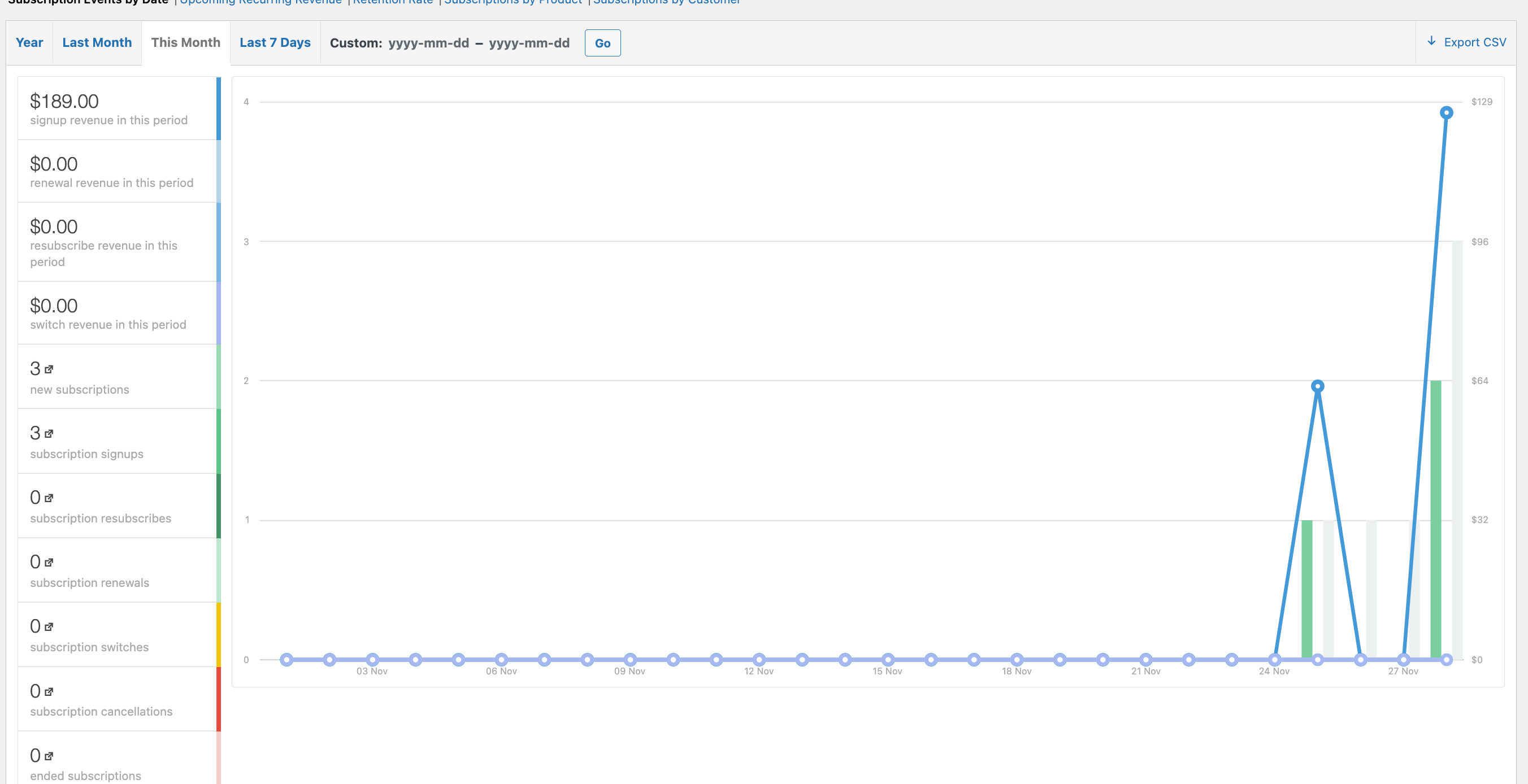
And these are great for if you are just starting out or only have a few products.
However, if you are looking for a more robust subscription reporting solution, our app — Metorik — can help you. We have listened to WooCommerce store owners who were unsatisfied with WooCommerce's native subscription reports, so we built or own that are:
More beautiful and user friendly
Robust with much more useful data
Customizable
Faster
Here is an example of what Metorik reports look like (top), compared to WooCommerce's (bottom).
Subscription Events Report:
-(1).png)
Renewal Revenue:
.png)
MRR and Active Subscriptions (only Metorik screenshots as WooCommerce doesn't have this report):
.png)
This is only a fraction of what Metorik can help you with; but let's move on to configuring your subscription emails.
Step 5: Create subscription emails
By default, WooCommerce will automatically send emails to your subscription customers for a few events:

However, there are many other times where you will want to automatically communicate with your customers during their subscription. For example, you will want to send them an email every time their next renewal is coming up. An email like this isn't possible with WooCommerce.
If this is something you want to create, Metorik can help you. Using our powerful segmenting system, you can create emails based on any combinations of filters, like next payment is in x days:
.png)
And we actually have a subscription renewal reminder email template to help you get up and running in a matter of moments:

You can learn how to create this email in this blog post.
Finishing up
As you can see it's very easy to get up and running with WooCommerce subscriptions. And for those looking to take their reporting and emails to the next level, Metorik is just what you are looking for.
-(1).png)
-1549438730.jpg)
